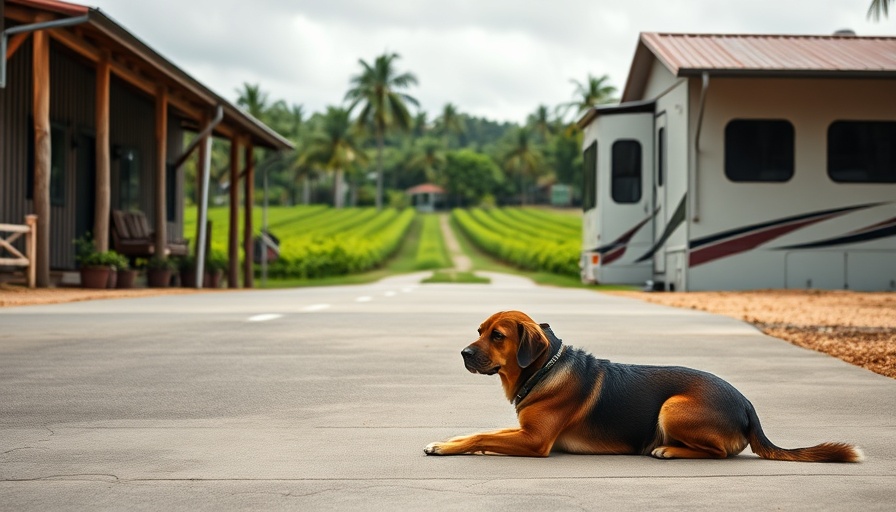
The Tragic Incident at L. Diaz Nursery: What We Know
In a harrowing turn of events, two men were affected by carbon monoxide exposure at L. Diaz Nursery in southwest Miami-Dade County, a niche often visited by tourists who seek the beauty and greenery of the region. Armando Velasquez, 38, tragically lost his life on June 5 when paramedics were called to the scene for a welfare check after a concerned neighbor noticed a man unconscious in a trailer on the property. This incident has sparked conversations around safety protocols regarding fumigation practices in agricultural areas.
The Implications of Fumigation Practices
Fumigation is a necessary but potentially hazardous practice used in nurseries and farming. These techniques involve the application of potent chemicals to control pests and diseases undermining plant life. A nearby witness voiced concerns over the nursery's common practices, noting that fumigation chemicals are typically applied while no one is on-site. The use of such hazardous materials raises critical safety questions, particularly regarding how and when they are applied. This incident underlines the urgent need for stricter regulations and enhanced safety measures to protect both workers and the surrounding community.
Understanding Carbon Monoxide Toxicity
Carbon monoxide (CO) is often referred to as the ‘silent killer.’ This odorless, colorless gas is produced by burning fossil fuels, and its dangerous effects can quickly become fatal in enclosed spaces. The symptoms of carbon monoxide poisoning include headache, dizziness, confusion, and unconsciousness—clearly illustrated by the unfortunate deaths and critical injuries sustained at the nursery. Awareness of the importance of ventilation, especially during periods of chemical usage, cannot be overstated, particularly in agricultural settings where workers may be at greater risk.
Community Responses and Ongoing Investigations
The Miami-Dade Sheriff's Office's Homicide Unit is conducting an investigation to determine whether the carbon monoxide was a result of fumigation activities or some other source. Community members and officials alike are praying for the recovery of Reymundo Chavez Garcia, 49, who remains in serious condition at Jackson South Medical Center. The lingering question of responsibility looms large—how can such tragic incidents be avoided in the future?
Ensuring Safety in Agricultural Practices
For tourists visiting Miami, incidents like these may not cross their minds as they enjoy the lush landscapes and vibrant flora of the region. However, safety should always be at the forefront, especially when it involves agricultural businesses that play a crucial role in the local economy. Effective training programs for workers on the dangers of carbon monoxide and the proper use of chemicals during fumigation can mitigate risks significantly. Moreover, regular inspection of facilities for compliance with safety standards is essential. The community must demand that local nurseries adopt these best practices to ensure both economic viability and employee safety.
What Can Tourists Learn from This Incident?
This tragedy highlights the complex relationships between tourism, agriculture, and community safety. For tourists, understanding the local environment can enrich their experiences—encouraging deeper appreciation for the agricultural practices that shape the backdrop of their visits. For those passionate about sustainable tourism, supporting local businesses that prioritize safety and environmental consciousness can foster a healthier—and safer—community for everyone.
A Call for More Awareness
As individuals engage with different facets of Miami—from its beaches to its farms—it’s crucial to maintain a dialogue about safety in all arenas. Awareness initiatives targeting tourists about the significance of health and safety measures in local industries can be instrumental in preventing future tragedies. Let this unfortunate event serve as a reminder: whether visiting vibrant nurseries or enjoying local delicacies, we all share a responsibility for safety and community welfare.
Join the conversation on social networks and support policies that enhance safety in our communities. Education is key—let’s prioritize awareness and responsibility in all aspects of our lives.
 Add Row
Add Row  Add
Add 



Write A Comment